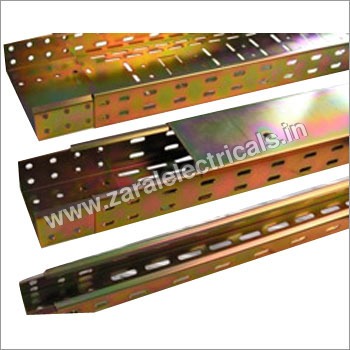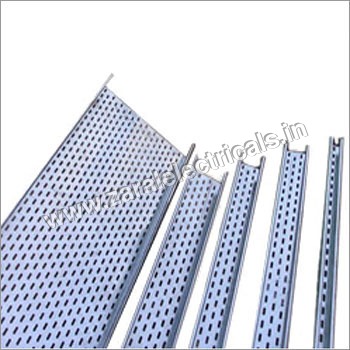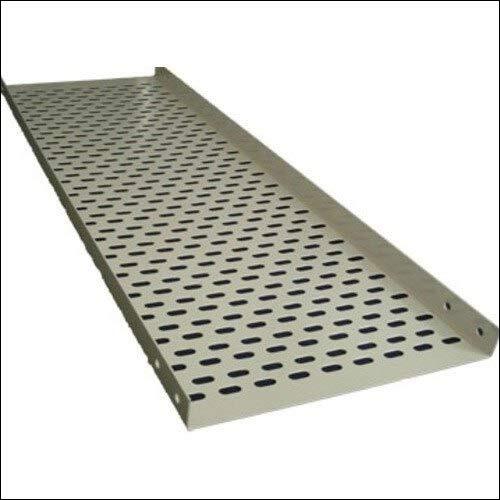Cable Raceways
Price 90.00 INR/ Meter
Cable Raceways Specification
- Conductor Material
- Steel
- Product Type
- Cable Raceways
- Material
- Steel
- Length
- Max 6000 Millimeter (mm)
- Side Rail Height
- 50 - 200 Millimeter (mm)
- Color
- Golden
Cable Raceways Trade Information
- Minimum Order Quantity
- 100 Meters
- Supply Ability
- 10000 Meters Per Day
- Delivery Time
- 3-4 Days
- Sample Available
- Yes
- Sample Policy
- Free samples are available
- Packaging Details
- Bundle and Carton Box
- Main Domestic Market
- All India
About Cable Raceways
Features:
- High tensile strength
- Smooth-finish
- Non-corrosive
- Sturdy construction
- High strength
- Dimensional accuracy
Specification
| Tray Type | Perforated Cable Tray |
| Material | Aluminum |
| Brand | Zaral |
| Sheet Thickness | 3 mm |
| Shape | Rectangular |
| Cable Tray Coating | Galvanized Coating |
| Usage/Application | Industrial |
Durable Steel Construction
Crafted from high-grade steel, our cable raceways deliver exceptional strength and longevity. The sturdy material ensures maximum protection for cables, reducing the risk of damage and enhancing overall safety in electrical installations. The golden finish adds to both the durability and visual elegance, making these raceways suitable for visible areas in both commercial and industrial environments.
Flexible Sizing for Diverse Needs
With side rail heights between 50 and 200 mm and lengths up to 6000 mm, our cable raceways are built to handle a range of cable loads and layouts. This flexibility supports complex routing and organization requirements, making them ideal for customized projects. Available in various dimensions, our products adapt seamlessly to your infrastructure needs.
Reliable Exporter and Manufacturer from India
Renowned as a leading exporter and supplier, we take pride in providing steel cable raceways that adhere to international quality standards. Our manufacturing process emphasizes reliability, precision, and timely delivery, ensuring your operation benefits from products designed and made in India. Our expert team offers comprehensive support from consultation to after-sales service.
FAQs of Cable Raceways:
Q: How are cable raceways with side rail heights of 50 - 200 mm typically installed?
A: Installation involves mounting the raceway along walls, ceilings, or under floors, using appropriate brackets and fasteners. The steel construction and the side rail design support easy routing and secure placement of cables, ensuring safety and streamlined organization throughout the layout.Q: What advantages does steel material provide for cable raceways?
A: Steel offers robust protection against impacts, corrosion, and environmental stress, ensuring a long service life. Its strength makes it suitable for supporting heavy cable loads, and the golden finish enhances both appearance and resistance to wear.Q: When should I consider using cable raceways with a maximum length of 6000 mm?
A: These longer raceways are ideal when spanning extensive runs, such as in large facilities, factories, or commercial complexes. They minimize the need for frequent connections or joints, resulting in a cleaner look and improved cable management efficiency.Q: Where are steel cable raceways with golden finish most commonly used?
A: They are widely used in commercial buildings, data centers, industrial plants, and public spaces where both durability and an elegant appearance are desired. The golden color suits installations where aesthetics are as important as functionality.Q: What is the typical process for manufacturing these steel cable raceways?
A: Manufacturing involves precise shaping and welding of steel to create the desired size, followed by cleaning, finishing, and application of a golden coating. Quality checks are carried out to ensure adherence to standards before the raceways are packed and shipped.Q: How do cable raceways benefit cable management and safety?
A: Cable raceways organize and protect cables from physical damage, dust, and accidental interference. By containing cables securely, they reduce tripping hazards, enhance system reliability, and comply with electrical safety regulations.

Price:
- 50
- 100
- 200
- 250
- 500
- 1000+
More Products in Cable Tray Category
Perforated Cable Tray
Price 80.00 INR / Meter
Minimum Order Quantity : 100 Meters
Material : Steel
Product Type : Other , Cable Tray
Color : Blue
Conductor Material : Steel
Cable Tray Accessories
Price 60.00 INR / Meter
Minimum Order Quantity : 100 Meters
Material : Steel
Product Type : Other , Cable Tray
Color : Silver, Other
Conductor Material : Steel
Metal Channel
Price 300 INR / Piece
Minimum Order Quantity : 1 Piece
Material : Steel
Product Type : Ladder Tray
Color : Other, Gray
GI Perforated Cable Tray
Price 80 INR / Meter
Minimum Order Quantity : 1 Meter
Material : Steel
Product Type : Perforated Through
Color : Other, Gray
Conductor Material : Steel


 Send Inquiry
Send Inquiry





